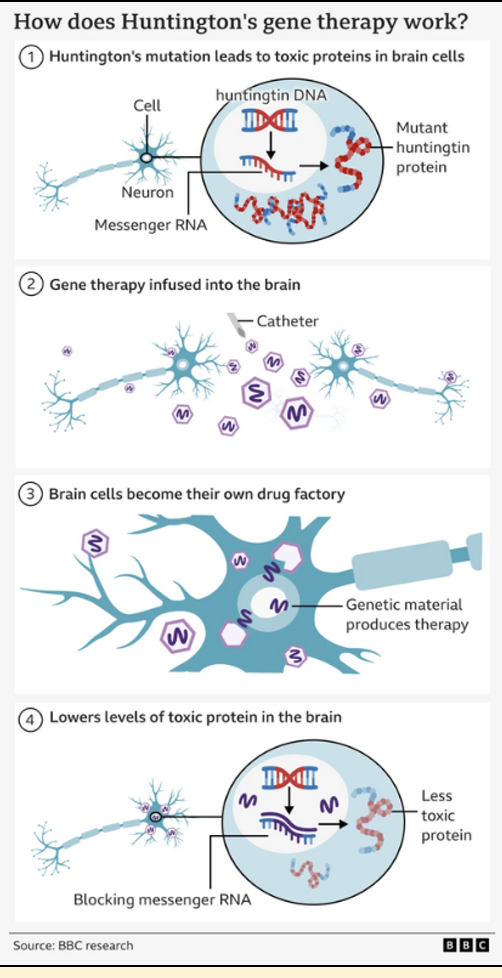DNA and Chromosomes
1/43
There's no tags or description
Looks like no tags are added yet.
Name | Mastery | Learn | Test | Matching | Spaced |
|---|
No study sessions yet.
44 Terms
Outline the cell cycle diagram
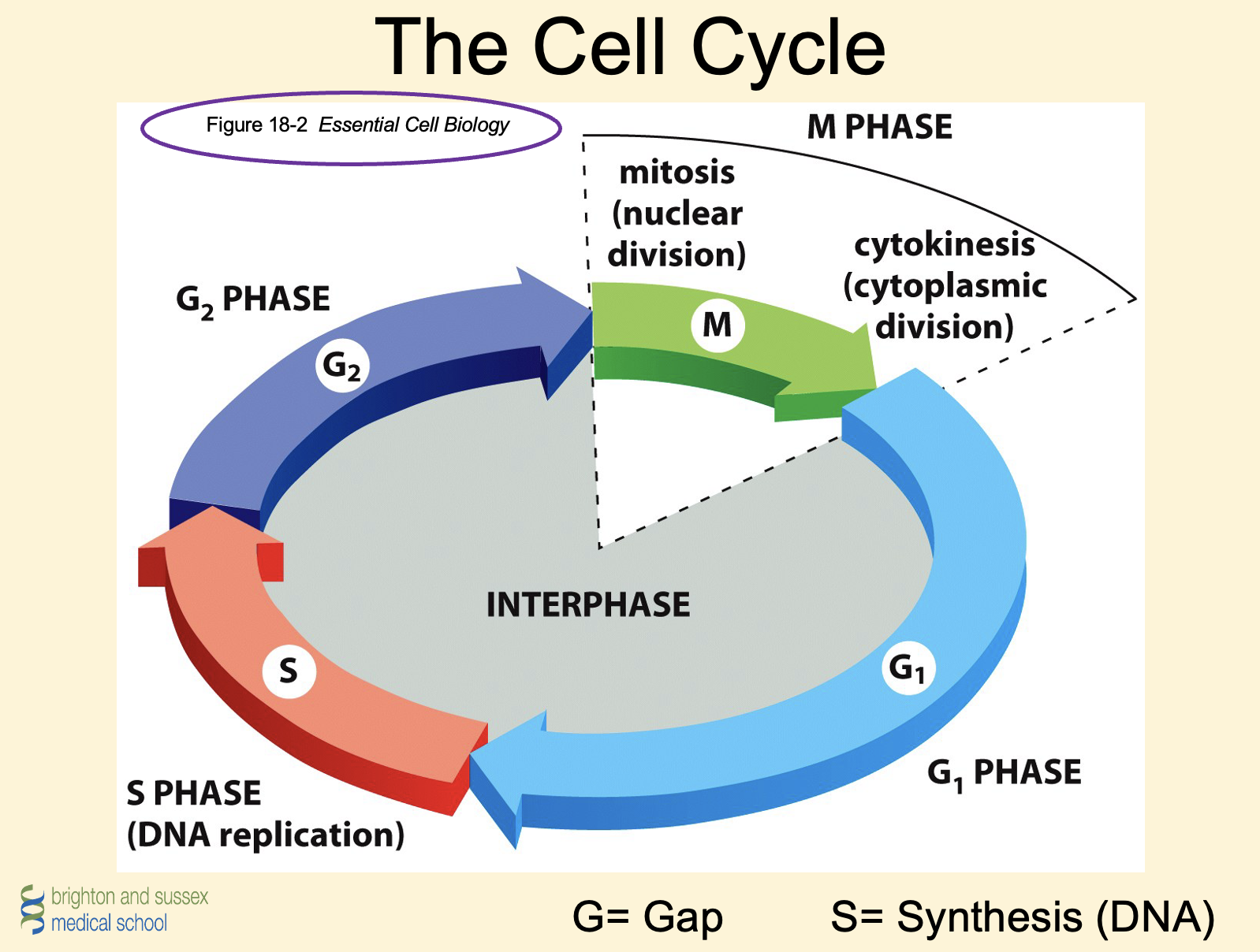
What does interphase consist of?
Gap Phase 1 (G1) - cell grows bigger and replicates its organelles. A high amount of protein synthesis is taking place in order to build new organelles.
Synthesis Phase (S) - the cell replicates its DNA
Gap Phase 2 (G2) - the cell keeps growing until all of the organelles have duplicated.
When does interphase occur?
Most of the time
6 stages of M phase
Prophase
Prometaphase
Metaphase
Anaphase
Telophase
Cytokinesis
In interphase, DNA is —- long and
DNA: 30 nm fibre
46 balls of unravelled string in nucleus
Show what happenes in the S phase
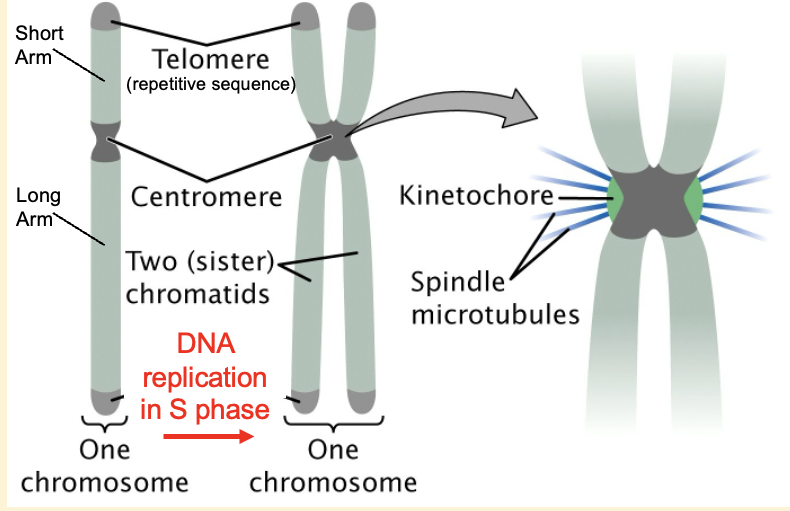
What happens in Prophase?
Chromosomes condense
Mitotic spindles form
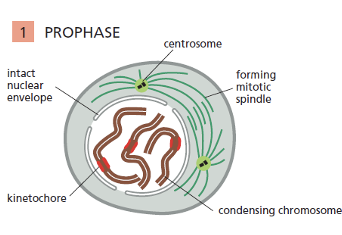
What happens in Prometaphase?
Nuclear membrane disintegrates
Spindles attach to kinetochores
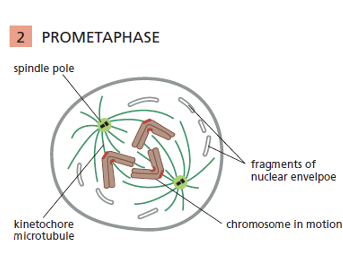
What happens in metaphase?
Chromosomes align at equator
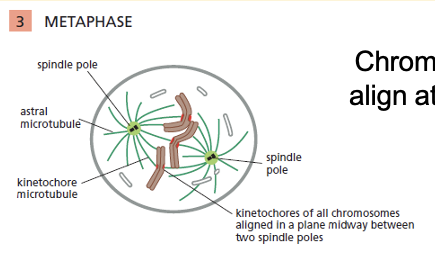
What happens in anaphase?
Sister chromatids separate
Pulled towards spindle poles
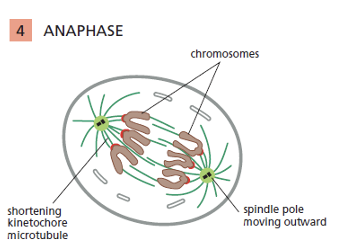
What happens in telophase?
Chromosomes arrive at poles
Nuclear envelope reform
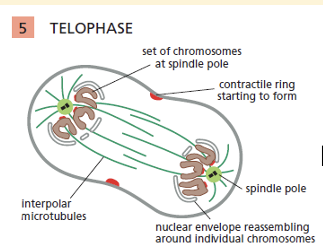
What happens in cytokinesis?
Cytoplasm divides resulting in two genetically near-identical cells
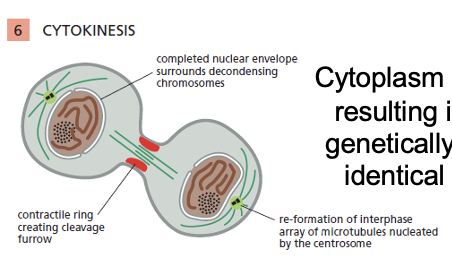
~X% cancers have mutations in p53
~50% cancers have mutations in p53
Which phase do chemotherapy drugs target?
Chemotherapy drugs target S and M phases – kill rapidly replicating cells
What is the cell cycle controlled by?
Controlled by cyclins and protein kinases (Cdks): phosphorylation of cdk/cyclin complexes
DNA replication is conservative or semi-conservative
DNA replication is semi-conservative
each strand acts as a template
2 identical copies will be made → any mutation will be passed down
Which end are nucleotides added to?
3’ end
Which direction is DNA synthesised in>
5’ to 3’
How is energy provided for DNA replication?
Energy provided from breakage of triphosphate bond
Lagging strand – discontinuous synthesis
Okazaki fragments
Leading strand
1. DNA Helicase: Unwinds double helix
2. DNA Primase: adds small RNA primer
3. DNA Polymerase: binds, adds nucleotides to 3’ end (of leading strand)
Lagging strand
4. Exposed lagging strand protected by single-strand DNA binding proteins
5. DNA Primase: adds small RNA primer
6. DNA Polymerase: adds nucleotides to 3’ end (of lagging strand)
7. DNA Nuclease: removes RNA primers, DNA polymerase fills in
8. DNA Ligase: joins together small gaps
What does DNA topoisomerases do?
DNA topoisomerases (including gyrases) – also help unwind
Multiple subtypes of each class of enzyme
Why are syndromes caused and why are they dangerous?
Mutations to mitosis or DNA replication genes usually lethal
Range of syndromes result from loss of minor components
What is Werner syndrome?
Werner Syndrome (1/200,000 in USA)
Premature aging disorder
Mutation in a DNA Helicase (WRN)
Errors in DNA replication and DNA repair
Increase in risk of cataracts, atherosclerosis, osteoporosis and cancer
Model for the aging process
Preventing the accumulation of mutations
Proof-reading capacity of DNA polymerase during DNA replication
Excision repair systems act throughout cell life repairing DNA damage
These systems reduce error during DNA replication from:
1 mistake in 105 nt without proofreading or repair
to 1 mistake in 109 nt with both
What is the internal source of DNA damage?
Products of normal cell function
What is the external source of DNA damage?
Mutagenic chemicals (benzene, cigarette smoke)
UV
Ionising radiation
Excision repair systems
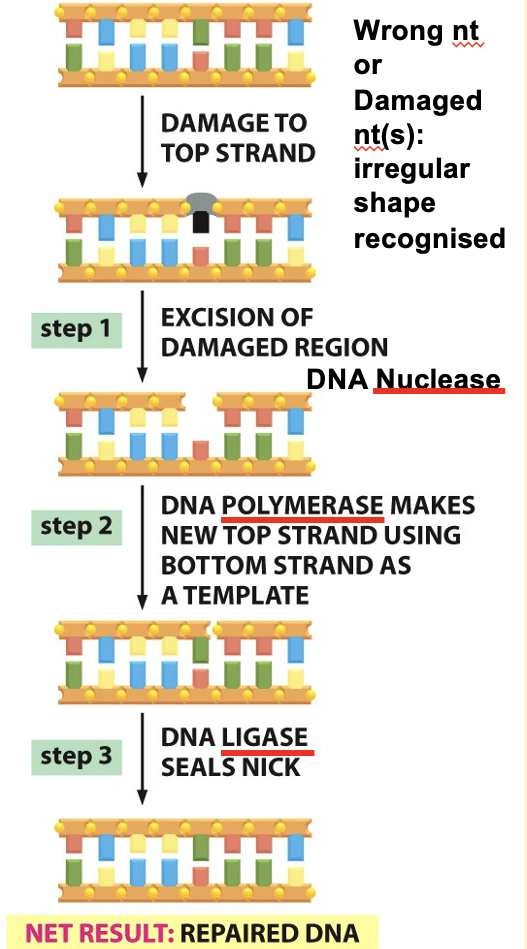
Most mutations in DNA repair are
lethal
What is Xeroderma pigmentosum?
XP: mutation in UV repair
Unable to remove thymine dimers
Autosomal recessive disorder
Symptoms of XP
Acute sun sensitivity
Hypo- and hyper-pigmentation
Multiple cancers at young age
Intellectual disability
Progressive degeneration
Define mutation
Any large/small change to DNA sequence (good or bad)
Assumes a deviation away from ‘normal’
Low frequency (<1% population)
Associated with disease (might refer to as gene variants when discussing with patients)
Define SNP
Single nucleotide polymorphism (SNP)
Single base change in DNA sequence
Normal genetic variation in population
Synonymous: no change in amino acid sequence
Non-synonymous: change to amino acid sequence
Characterising mutations
Impact individual or offspring (somatic or germ line)
Scale of mutation (chromosome or SNP)
Effect on normal function (loss or gain of function)
Somatic or germ-line
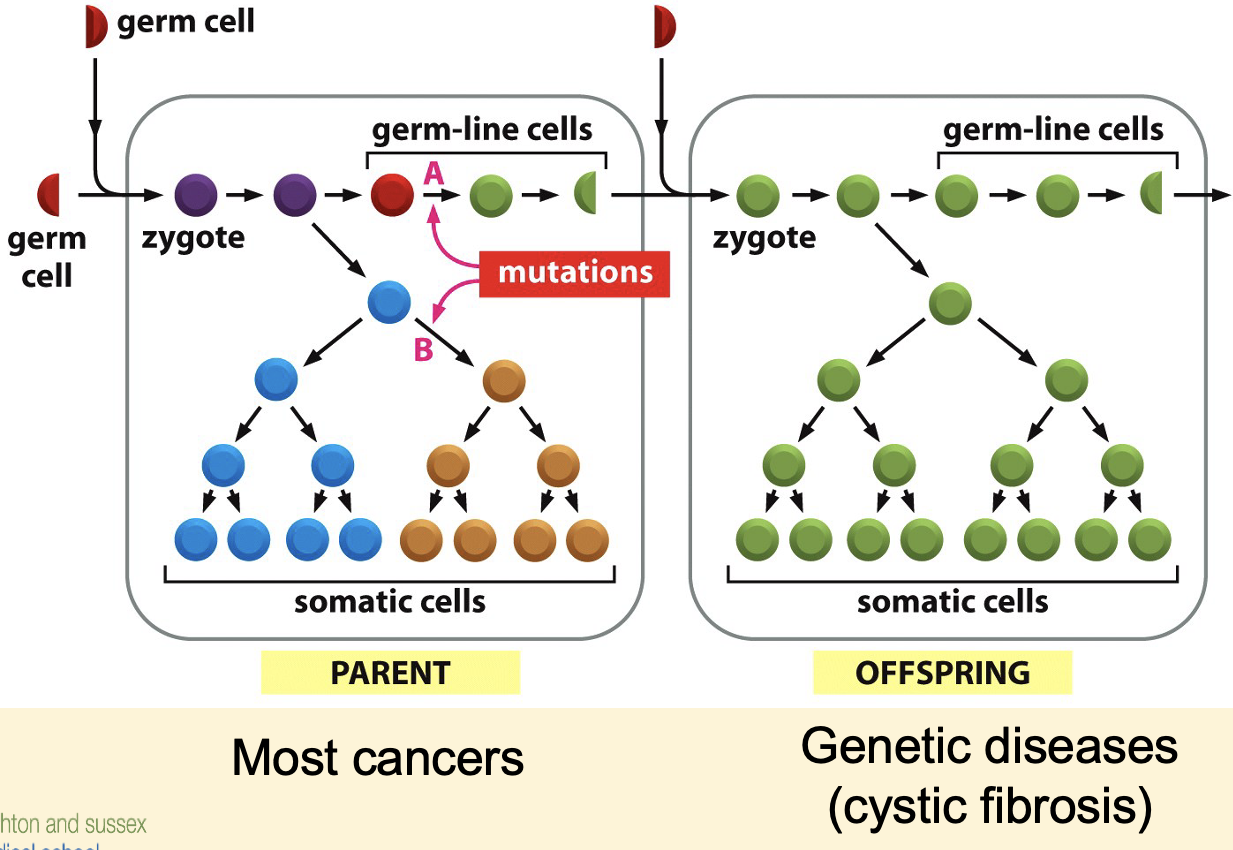
Give an example of substitution mutation
Sickle cell anaemia - loss of function
Give an example of a deletion mutation
Cystic fibrosis - loss of function
Give an example of an intersertion
Hunington’s disease - gain of function
What is sickle cell
Single nucleotide substitution in HBB gene (beta chain of haemoglobin)
Misshapen blood cells do not survive as long (can cause anaemia) and clog up capillaries
What is cystic fibrosis?
Abnormal lung mucus in lungs, results in lung infections and difficulty breathing and digesting food
11,000 cases in the UK
Impaired chloride transport (loss of function)
Misfolded CFTR protein, unstable or not transported
70% of patients share 3bp deletion in CFTR gene on chr 7
(cystic fibrosis transmembrane conductance regulator)
Hungington’s Disease
Neurodegenerative disease (starts to appear age 30-50)
uncontrollable muscular movements
loss of memory and depression
difficulties with speech and swallowing
Damage of the nerve cells in areas of the brain
~7,000 cases in the UK
Hungington’s disease mutation
Caused by increase in number of CAG trinucleotide repeats (encoding glutamine) in the Huntingtin (HTT) gene
Polyglutamine residues stick together creating a toxic product (gain of function) which causes neuron cell death through multiple mechanisms
How is Hungington’s disease treated?
Use microRNA to bind to huntingtin mRNA – reduce gene expression
Infused deep into the brain using real-time MRI scanning and a microcatheter: 12-18h neurosurgery
Results not published yet
